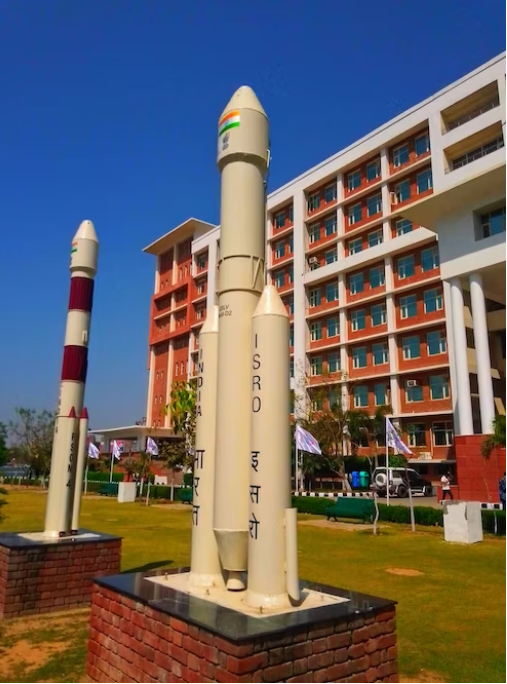Mastering the Right Code: Top 10 Programming Languages for a Career at ISRO

In the vast cosmos that is the field of space exploration, the Indian Space Research Organisation (ISRO) shines as a beacon of scientific prowess and innovation. For countless dreamers and aspiring scientists, a career at ISRO is akin to reaching for the stars. However, to join the League of Space Pioneers, one must be equipped with more than just dreams and aspirations; one needs the right set of tools, and in the digital age, that means programming languages.
These Top 10 Programming Languages for a Career at ISRO are not just coding scripts; they are the very threads that weave the fabric of space exploration, turning dreams of exploring the cosmos into a tangible reality.ISRO, renowned for its extraordinary feats in satellite launches, remote sensing, and cutting-edge technical endeavours, relies on a repertoire of programming languages to achieve its celestial goals. Also, read Astro Shakti: Women Champions of Chandrayaan-3


Top 10 Programming Languages for a Career at ISRO
In this cosmic journey through the coding cosmos, we’ll embark on a quest to uncover the top 10 programming languages that can launch your career into orbit at ISRO. These languages are the rockets of the digital era, propelling you towards a future among the stars.
1. Python – The Versatile Workhorse
In the world of space exploration, adaptability and versatility are paramount. Python, ISRO’s go-to programming language, embodies these qualities to the fullest. Python plays a pivotal role in ISRO’s endeavours, from processing the vast amounts of data collected by satellites to propelling advancements in AI, data science, neural networking, and machine learning. It’s the Swiss Army knife of programming languages, catering to a myriad of applications within the space agency.
2. Fortran – The Scientific Powerhouse
Fortran, a programming language designed with scientists and engineers in mind, reigns supreme in ISRO’s toolkit. Its remarkable speed and numerical capabilities make it indispensable for a wide array of tasks. Beyond the confines of space research, Fortran is the driving force behind designing aircraft structures, automation control systems, and the critical analysis of scientific data. Its high-speed efficiency and unparalleled contribution to numerical weather prediction cement its status as a vital asset for ISRO’s space exploration missions.


Graphics and visualization hold a special place in ISRO’s mission planning and execution. Matlab, a powerful tool for graphical representation, finds extensive use among ISRO scientists. However, the organization’s prudent approach to cost management leads them to opt for the free and open-source version of Matlab. Proficiency in this tool is a valuable asset for individuals aspiring to contribute to ISRO’s scientific endeavours, where clear and concise data representation is crucial.
4. C – The Foundation Stone
When renowned space agencies like ISRO and NASA require reliability and simplicity, they turn to the C programming language. C’s legacy in the software world is built upon its simplicity and flexibility in memory management. For ISRO, this translates into the ability to precisely control memory allocation, a critical aspect of ensuring the reliability and success of space missions. C remains the foundation stone upon which many of ISRO’s critical applications are built, emphasizing its significance in the agency’s operations.

5. C++ – The Flight Software Developer
As technology evolves, so do the demands on software development. Enter C++, the advanced sibling of C. ISRO and NASA turn to C++ for the development of flight software, where speed, efficiency, and precision are of the utmost importance. C++ has proven to be a reliable partner in ground control operations, enabling mission success through its robust capabilities. Its adaptability and power are harnessed to navigate the complexities of space missions effectively.

In the intricate landscape of ISRO’s operations, VHDL (VHSIC Hardware Description Language) assumes a pivotal role. It stands as the preferred programming language for the intricate Attitude and Orbit Control Systems (AOCS), tasked with the precise management of spacecraft positioning. The endorsement of VHDL by the Institute of Electrical and Electronics Engineers (IEEE) underpins its significance. VHDL’s unique capacity to model the intricate behaviour and structure of digital systems across multiple layers of abstraction remains instrumental in ensuring the flawless execution of ISRO’s missions, where precision and control reign supreme.

7. Java – The Bridge Builder
Java emerges as a vital bridge within ISRO’s operations, efficiently linking flight dynamics while simultaneously handling a multitude of applications derived from scientific operations and analytical tools. Proficiency in Java is not merely advantageous but a necessity for those aspiring to make a mark at ISRO. Its capability to handle diverse tasks, collating and processing critical data, makes it a cornerstone of the agency’s operations.

Despite certain limitations in libraries, JavaScript stands tall as a high-level programming language with immense value for scientific purposes. Its adaptability to run on multiple scientific platforms makes it invaluable. JavaScript contributes significantly to ongoing projects, providing crucial support for data processing and visualization.
9. Perl – The Simulation Maestro
ISRO’s operations often demand complex simulation software to ensure the precision and efficiency of their missions. In this intricate landscape, Perl proves to be a reliable maestro. It steps in to streamline and optimize various simulation software, contributing to the seamless execution of ISRO’s ambitious projects.
Lisp – The Intelligence Enabler
In the realm of intelligence applications, where conventional programming languages may fall short, Lisp shines. Its unique ability to compute with symbolic expressions, rather than being limited to numerical calculations, is a distinct advantage. Lisp serves multiple functions within ISRO’s operations, enhancing the agency’s capabilities in various critical domains.
Conclusion
As we conclude our cosmic voyage through the realms of programming languages that empower the incredible work at ISRO, it’s evident that coding is not just a skill but a gateway to the stars. ISRO, with its visionary scientists and audacious missions, has shown the world that the sky is not the limit; it’s merely the beginning.
So, if you’ve ever gazed at the night sky in wonder, imagining what lies beyond, consider these programming languages as your celestial compass.
Keep coding, keep striving for the stars, and one day you could be one of ISRO’s brightest brains, solving the universe’s riddles one line of code at a time.
Also, read Top MSc Computer Science Colleges in Jaipur






